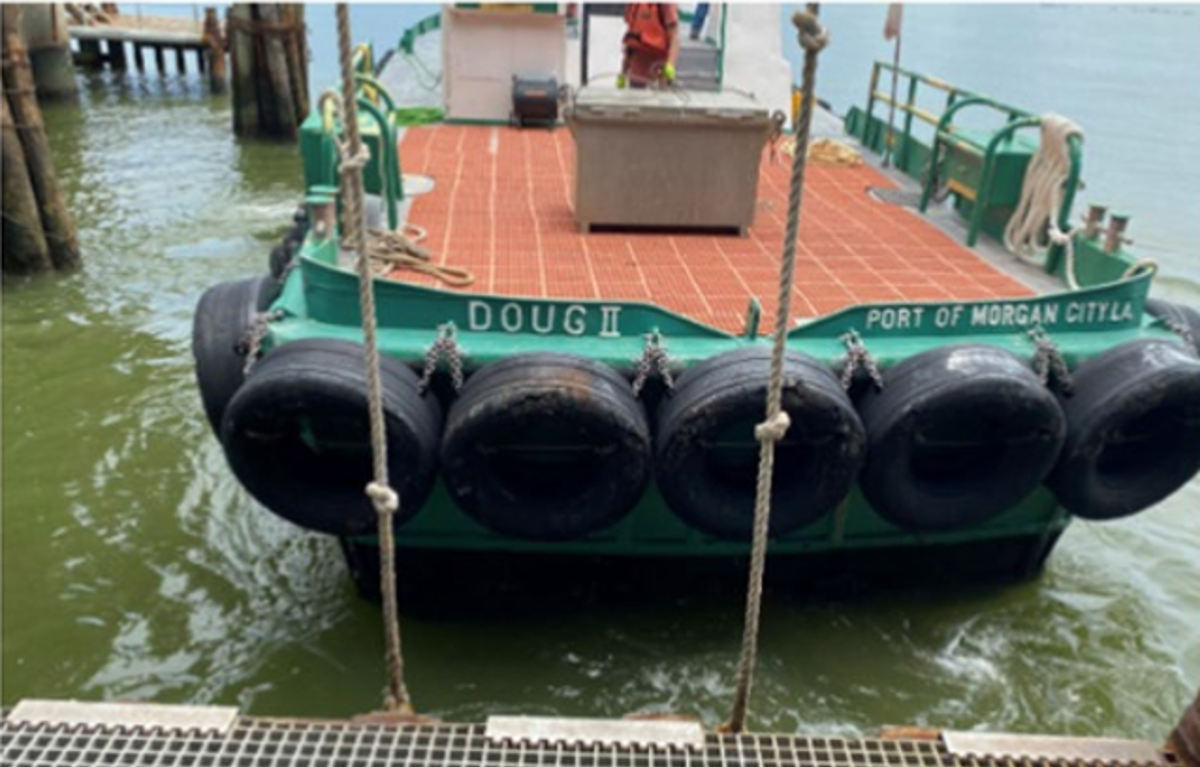BSEE: Swing rope transfers
- Safety Flash
- Published on 16 May 2023
- Generated on 8 December 2025
- IMCA SF 12/23
- 3 minute read
Jump to:
The United States Bureau of Safety and Environmental Enforcement (BSEE) has published Safety Alert 456 relating to the dangers inherent to swing rope transfers.
The BSEE notes that “personnel transfers using swing ropes and baskets present a considerable risk for offshore workers”.
The use of swing ropes is not permitted in some parts of the world.
This is passed on as of interest to members, while noting clearly that IMCA does not recommend the use of swing ropes. (Section 4.4.4, Guidance on the transfer of personnel to and from offshore vessels and structures)
What happened?
A recent example of an injury incurred during a swing rope transfer, is a fractured foot sustained by a worker attempting to use a swing rope to board a satellite platform from a work boat. As the Captain manoeuvered the boat, the worker placed his foot on a bumper tire to position himself for the swing. The worker’s foot slipped between the tyre and the boat when the tyre hit the platform, resulting in injury.
A recent example of an injury incurred during a swing rope transfer, is a fractured foot sustained by a worker attempting to use a swing rope to board a satellite platform from a work boat. As the Captain manoeuvered the boat, the worker placed his foot on a bumper tire to position himself for the swing. The worker’s foot slipped between the tyre and the boat when the tyre hit the platform, resulting in injury.

View of boat stern where swing rope injury occurred (BSEE)
BSEE notes two further injuries in the last five years:
- An employee lacerated his shin after it struck the rear of a vessel as he was completing a swing.
- An employee fell into the water between a workboat and a platform when he misjudged the distance between the boat’s deck and the top of a swell during a swing rope transfer. As he made his swing, the wave shifted the boat, moving the landing area. When the employee let go of the swing rope, he fell into the water. He was quickly retrieved from the water and did not sustain injuries.
BSEE recommends that:
- All offshore personnel transfers are treated as stand-alone operations.
- Formal risk assessment is conducted before a transfer occurs.
- There is “Stop work authority” for all persons involved.
Because of the inherent risks involved, BSEE also recommends that alternative methods are used where practicable and that there is routine assessment of the training and competence of everyone who has responsibilities for, and is involved with, personnel transfer.
As noted above, IMCA does not recommend the use of swing ropes.
Members should refer to IMCA HSS025 Guidance on the transfer of personnel to and from offshore vessels and structures.
IMCA Safety Flashes summarise key safety matters and incidents, allowing lessons to be more easily learnt for the benefit of the entire offshore industry.
The effectiveness of the IMCA Safety Flash system depends on the industry sharing information and so avoiding repeat incidents. Incidents are classified according to IOGP's Life Saving Rules.
All information is anonymised or sanitised, as appropriate, and warnings for graphic content included where possible.
IMCA makes every effort to ensure both the accuracy and reliability of the information shared, but is not be liable for any guidance and/or recommendation and/or statement herein contained.
The information contained in this document does not fulfil or replace any individual's or Member's legal, regulatory or other duties or obligations in respect of their operations. Individuals and Members remain solely responsible for the safe, lawful and proper conduct of their operations.
Share your safety incidents with IMCA online. Sign-up to receive Safety Flashes straight to your email.